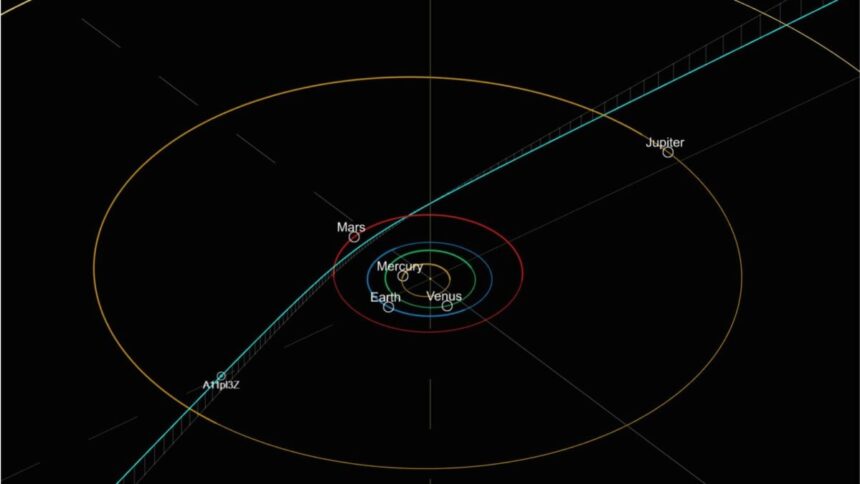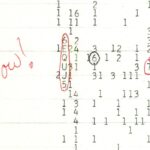Astronomers are scrambling to gather data on a mysterious object that’s currently hurtling through the solar system. Preliminary observations suggest it came from interstellar space, and if confirmed, it would mark the third discovery of an interstellar object in history.
The cosmic visitor—tentatively named A11pl3Z—first appeared in data collected by the Asteroid Terrestrial-impact Last Alert System (ATLAS) between June 25 and 29, Universe Today reports. ATLAS uses telescopes in Chile, South Africa, and Hawaii to scan the skies multiple times a night in search of moving objects. ATLAS spotted A11pl3Z again on Tuesday, July 1, and by Wednesday, the Deep Random Survey remote telescope in Rio Hurtado, Chile, had detected it, too. These early observations suggest the dim object is likely a large asteroid or comet—potentially 12 miles (20 kilometers) wide—that is traveling toward the inner solar system at roughly 152,000 miles per hour (245,000 kilometers per hour), according to EarthSky. It appears to be approaching from the Milky Way’s galactic disk.
The International Astronomical Union’s Minor Planet Center added the object to its near-Earth object confirmation list on Tuesday, July 1. This means astronomers need further observations to confirm that it is, in fact, a new near-Earth object. NASA’s Jet Propulsion Laboratory has also added A11pl3Z to its near-Earth object confirmation page. Though it’s too soon to say anything for certain about this visitor, early estimations of its speed and trajectory suggest that it came from outside the solar system and has enough momentum to shoot through it without slowing down. But don’t worry, A11pl3Z has no chance of hitting Earth or even coming that close to us.
“Astronomers may have just discovered the third interstellar object passing through the Solar System!” the European Space Agency’s Operations account shared on Bluesky early Wednesday. “ESA’s Planetary Defenders are observing the object, provisionally known as #A11pl3Z, right now using telescopes around the world.”
Until now, astronomers had only spotted two confirmed interstellar objects. The first was ‘Oumuamua, a small, cigar-shaped object that visited our solar system in 2017. Its true nature is still up for debate, though some experts believe it was a comet. The second was a comet called Comet 2I/Borisov that streaked through our cosmic neighborhood in 2019. Discovering an interstellar object offers astronomers an extremely rare chance to learn about other star systems by observing their remnants as they pass by. While these objects are likely natural phenomena, that hasn’t stopped people from speculating that they are extraterrestrial probes.
A11pl3Z is currently about 3.8 astronomical units (au) from Earth, according to Avi Loeb, an astronomer at Harvard University. One astronomical unit is equal to the average distance between the Earth and the Sun. On October 3, it should make a close approach to Mars, coming within just 0.2 au of the Red Planet, Universe Today reports. This may be close enough for NASA’s Mars Reconnaissance Orbiter to detect it. A11pl3Z should make its closest approach to the Sun on October 29 and its closest approach to Earth on October 30, both at a distance of 1.35 au. The object will be traveling outbound at roughly 61 miles per second (98 kilometers per second), according to Universe Today.
By then, the Vera C. Rubin Observatory, which recently released its first findings, should be able to gather data on A11pl3Z. In just 10 hours of test observations, this powerful telescope discovered more than 2,000 new asteroids. The James Webb Space Telescope should be able to catch a glimpse of this object, too. As astronomers learn about these strange outsiders, the universe beyond our solar system becomes less mysterious—but all the more captivating.
Read the full article here












